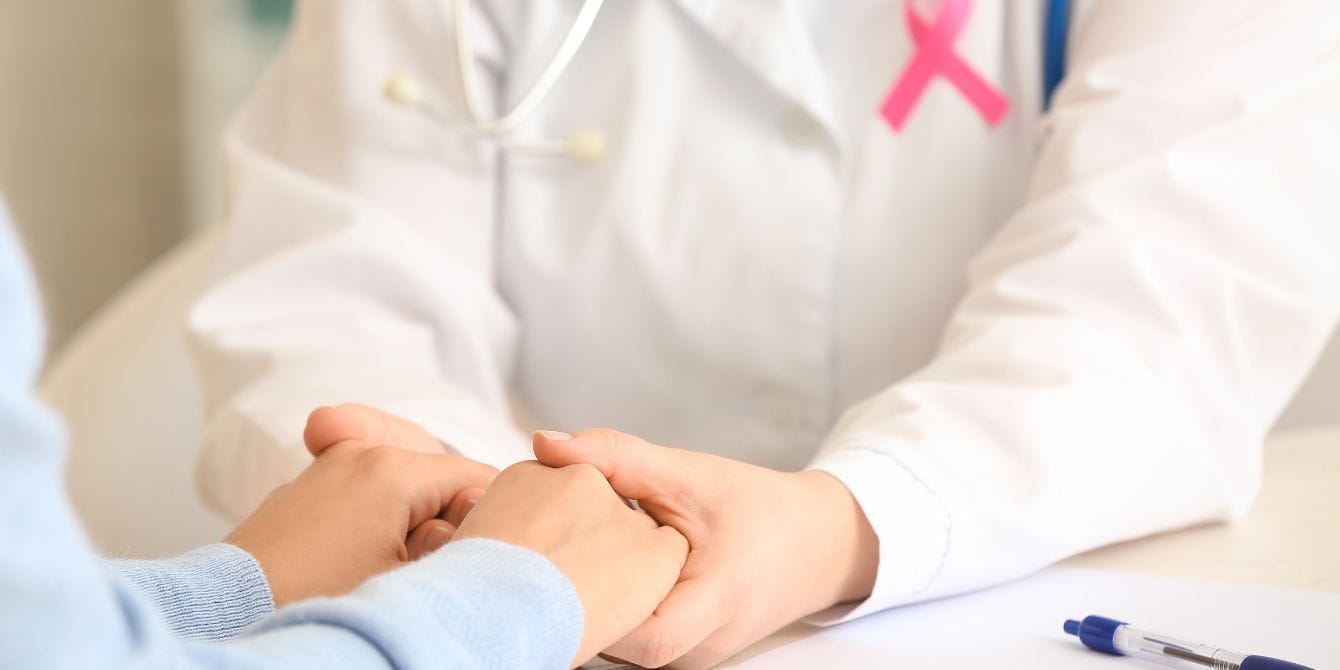Alexea Gaffney-Adams, MD, was diagnosed with stage three breast cancer in April 2018 and underwent a double mastectomy to remove both breasts. She’s now a breast cancer survivor, but like many other women who have gone through breast cancer treatments, lives every day with a painful reminder of what she went through.
She is almost always in some sort of pain. Her right arm and hand are always at least moderately swollen and sometimes the swelling is extreme. She has limited range of motion in her arms because of all of the fluid trapped within them and her skin always feels tight and itchy.
Dr. Gaffney-Adams has lymphedema, a chronic condition that can cause extreme swelling, typically in the arms or legs. It’s a condition that affects 20-30% of women who have breast cancer—and yet it’s a condition that many don’t know about when they go through treatment.
What is lymphedema and why is it common for breast cancer patients?
As part of her breast cancer treatment, Dr. Gaffney-Adams also had 15 lymph nodes removed from her right side and three from her left. It’s the removal of those lymph nodes that has led to her lymphedema onset and subsequent pain and swelling.
“The lymphatic system is like the sewage system of the body,” explains Joseph Dayan, MD, a board-certified plastic surgeon who specializes in lymphedema. “It drains fluid waste that naturally occurs from metabolism out of the arms and legs and all the tissues and then goes up to your neck and back into the bloodstream.”
Lymph nodes are important because they purify and filter that waste in the body, says Dr. Dayan. When doctors remove lymph nodes as part of breast cancer treatment, it creates an obstruction for the body because the waste can no longer flow properly. This in turn means fluid gets trapped where the blockage is and causes symptoms like the ones Dr. Gaffney-Adams is experiencing.

Doctors often remove lymph nodes during a mastectomy to check to see if the cancer has spread. Not everyone who has lymph nodes removed will develop lymphedema—but because it’s a common practice as part of breast cancer treatments, which is why so many women with breast cancer will develop this condition.
Lymphedema often takes women by surprise
“When somebody is diagnosed with breast cancer, that’s the priority,” Dr. Dayan stresses. “The first consideration is preserving life and lymphedema is definitely a secondary consideration, so it kind of gets drowned out from the initial consult on.”
“I was so focused on hearing I would need chemotherapy again that I really didn’t pay attention to my doctor also mentioning I would need to see a lymphedema therapist as a precaution,” says Marianne DuQuette Cuozzo, a three-time cancer survivor who underwent a double mastectomy in 2014. “My focus was on my breasts being amputated, losing my hair and going through chemo.”
Dr. Gaffney-Adams agrees that lymphedema was a secondary consideration. She says her surgeon only briefly mentioned lymphedema during a consult. “I think it deserved more than an honorable mention in the conversation,” she says. She was unaware of how many women develop lymphedema, and was also not told that Black women have a higher risk of developing the condition.
Lymphedema doesn’t always appear right away, says Dr. Dayan, which makes it more likely to fall off the radar. The condition can develop up to 18-24 months after surgery. He also says that historically, doctors have very little training for how to treat lymphedema.
Lymphedema is a life-long reminder of breast cancer
“Many of our patients are more tearful about their lymphedema than their breast cancer,” emphasizes Dr. Dayan. “There is a time where for most cases, breast cancer treatment is over,” he says, “but once you get lymphedema, there is no end, and it’s a constant reminder of their breast cancer.”
DuQuette Cuozzo recounts how her initial lymphedema treatments put her into a downward spiral. She’s a decorative artist and couldn’t work, and the compression garments she needed to wear didn’t match her style. “It put me in a dark place,” she says. “I didn’t want to go out and socialize.” She’s since been able to find compression sleeves from LympheDIVAs that make her feel more like herself, and has even been able to use her artistic skills to design for the company.


Dr. Dayan says he’s had patients who’ve had to give up things like playing golf or going to the beach because their lymphedema gets worse when they’re doing things that they love. Finding clothing to fit swollen limbs can be tough, he says, and can cause self esteem issues.
“I wish that people had a greater awareness of the condition,” admits Dr. Gaffney-Adams. “It’s permanent and requires lifelong treatment.”
As with all diseases, early diagnosis is key. If you or a friend is diagnosed with breast cancer, ask your surgeon about your risk of lymphedema and educate yourself on what symptoms to be on the lookout for. Lymphedema may be a chronic condition, but symptoms can be managed through things like compression machines, lymphatic drainage massages and compression garments.
This article is in remembrance of Anna Kramer, who sadly passed away from breast cancer December 24, 2021. Anna wore a compression sleeve daily to help manage her lymphedema symptoms and was a fierce advocate for more education and understanding around breast cancer and its potential side effects.

